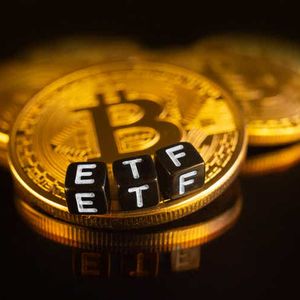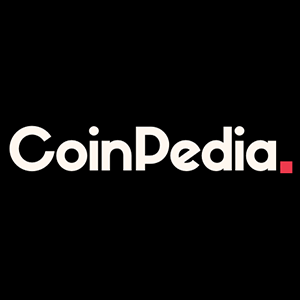Summary Bitcoin interest has remained relatively high, and bitcoin prices have now reached over $70,000. We've had a year without any big crypto industry meltdowns and a strong start to the year with spot bitcoin ETF launches. This year has been one of the busiest in terms of crypto ETF launches. Issuers and investors are perhaps envisioning a more crypto-friendly environment post-election, which has reignited innovation. Bitcoin ( BTC-USD ) has had its highs and lows when it comes to investor interest (and its prices). But lately, interest has remained relatively high, and bitcoin prices have now reached over $70,000. We’ve had a year without any big crypto industry meltdowns and a strong start to the year with spot bitcoin ETF launches. Now the U.S. election has been making issuers and investors more excited for the future of crypto. This year has been one of the busiest years in terms of crypto ETF launches. I’ve offered glimpses of the future before. But this note provides a more focused look back at the crypto ETF industry and how that builds toward the future. Phase One: Early Beginnings, Trusts, Blockchain ETFs In the early days, we saw the beginning of crypto ETFs. The Winklevoss twins are a name many of us may have forgotten. But they were some of the original big thinkers behind crypto ETFs. Back in July 2013, the Winklevoss twins filed for the Winklevoss Bitcoin Trust. That would have been the first bitcoin ETF. After three years of back and forth with the SEC, the filing was rejected citing fraud and lack of regulation (this should sound familiar because it is the same rationale given over the next 10 years). The Grayscale Bitcoin Trust ( GBTC ) (now an ETF) was launched as a trust structure in September 2013 and was initially accessible only to accredited investors. Grayscale first submitted its application for conversion to an ETF in 2016-2017 and received pushback from the SEC. It withdrew its application but continued to push for change in the regulatory environment. Around this time, they also launched the Grayscale Ethereum Trust ( ETHE ) (also now an ETF) as a trust. The first blockchain ETFs launched in 2018: the Amplify Transformational Data Sharing ETF ( BLOK ) and the Siren Nasdaq NexGen Economy ETF ( BLCN ). Blockchain ETFs hold equity securities in the blockchain and crypto space, which was a very nascent industry at the time. Coinbase Global ( COIN ), which is one of the most well-known crypto stocks, did not go public until April 2021. Phase Two: Bitcoin Goes Mainstream During the pandemic, crypto took off. Partly fueled by stimulus payments and partly fueled by the boredom of staying at home - suddenly everyone became a crypto investor. If you were lucky enough to follow the meme stock craze in early 2020, you might have bought bitcoin for $5,000-10,000. After only about a year, the price of bitcoin would reach over $60,000. By this time, BLOK had reached over $1 billion in assets. But this also led to a disconnect. Investors were interested in bitcoin. But ETFs weren’t really part of that picture, since we only had blockchain equity ETFs. They were correlated with bitcoin prices. But the comparison is like investing in an energy ETF versus investing in an oil ETF. Issuers were still eager to file for the first spot bitcoin ETF. Issuers like VanEck, ARK, and Bitwise continued to file for a spot bitcoin ETF filing despite persistent denials. It wasn’t until May 2021 that the first ETF with crypto in its name launched - the Bitwise Crypto Industry Innovators ETF ( BITQ ). As mentioned before, blockchain ETFs typically used terms like blockchain, digital transformation, next-generation economy. We were getting closer to a true bitcoin ETF, but still only in the adjacent space. Phase Three: Finally... the First U.S. Bitcoin ETF The excitement continued to build until the first U.S. bitcoin ETF was launched in October 2021 - the ProShares Bitcoin Strategy ETF ( BITO ). At the time, this was the second-biggest launch in history in terms of trading activity. While this was considered the first U.S. bitcoin ETF (and a big milestone), it was futures-based. Investors were looking ahead to potential spot bitcoin ETF launches, which would be physically backed by bitcoin and not subject to roll costs like a futures-based product. That same month, Grayscale filed another application for GBTC’s conversion, which was later rejected in June 2022. That summer, there was a shift in sentiment toward bitcoin and crypto. We saw the collapse of terraUSD and luna, along with the bankruptcy of Celsius. Bitcoin prices were heading below $20,000. It was the perfect time for an inverse bitcoin ETF to come out. The ProShares Short Bitcoin Strategy ETF ( BITI ) was launched in June 2022 at a time where many expected bitcoin prices to keep falling. Phase Four: Short Bitcoin and Closures After the inverse product was released, bitcoin prices continued to see pressure. This was further fueled by the FTX collapse and many investors wanted nothing to do with crypto anymore. During this time, several funds closed, including funds that focused on the crypto mining equity sector. But a bullish sentiment wasn’t dead - the 2x Bitcoin Strategy ETF ( BITX ) was launched a year after BITI, in June 2023. At this point, it was unclear why a spot bitcoin ETF wasn’t approved. But we had inverse and 2x leveraged products. Futures are regulated by the CFTC. But common sense suggested that a spot bitcoin ETF should have been approved by this point. Phase Five: Spot ETFs and Everything Else You Can Think Of A lot of things happened very quickly over the past year and a half. In August 2023, the courts finally agreed that it did not make sense for futures bitcoin products to exist and not spot bitcoin products. Grayscale won its legal battle against the SEC. That meant it was now a matter of when, not if, spot bitcoin ETFs would be approved. But before spot bitcoin ETFs were launched, ether futures ETFs were surprisingly fast-tracked in October 2023. That added more fuel to the fire that not only spot bitcoin ETFs would be approved but so would spot ether ETFs. Issuers raced to file, including large asset managers like BlackRock and Fidelity, with the iShares Bitcoin Trust ( IBIT ) and the Fidelity Wise Origin Bitcoin Fund ( FBTC ). With several almost identical products filed, a fee war resulted. Most of the spot bitcoin ETFs had fee waivers for the first six months or up to a certain amount of assets. Even after fee waivers, fees were generally low (20-25 bps). Spot bitcoin ETFs finally launched in January. They ended up being the most successful launch on record (and they continue to draw attention almost 10 months later). The spot ether ETF launch followed somewhat quickly in July and was relatively less successful. But since then, issuers have been getting creative with other launches. Most of these are “complex” strategies like leveraged or derivative funds, despite some roadblocks to adoption for anything beyond traditional spot bitcoin ETFs. Besides leveraged or derivative funds, we’ve also seen funds like the STKD Bitcoin & Gold ETF ( BTGD ), which holds both bitcoin and gold. New blockchain ETFs like the SPDR Galaxy Transformative Tech Accelerators ETF ( TEKX ) are still emerging, which State Street and Galaxy launched in early September, along with a suite of two other ETFs. Additionally, the SEC granted approval to the Cboe and NYSE for trading options for certain ETFs recently. (The NYSE has also approved options on a small number of spot bitcoin ETFs.) Several more spot ETFs have also been filed, including Solana, XRP, and Litecoin. Final Thoughts: More Crypto Innovation, Launches in the Future Notably, the biggest takeaway from this is that issuers haven’t been holding back with crypto. Issuers and investors are perhaps envisioning a more crypto-friendly environment post-election, which has reignited innovation. Although it is currently ahead of the investor adoption curve, I believe innovation is essential for the crypto ETF environment and plays an important role in competition and education - which will ultimately breed greater adoption. Disclosure: © VettaFi LLC 2024. All rights reserved. This material has been prepared and/or issued by VettaFi LLC ("VettaFi") and/or one of its consultants or affiliates. It is provided as general information only and should not be taken as investment advice. Employees of VettaFi are prohibited from owning individual MLPs. For more information on VettaFi, visit VettaFi . Original Post














